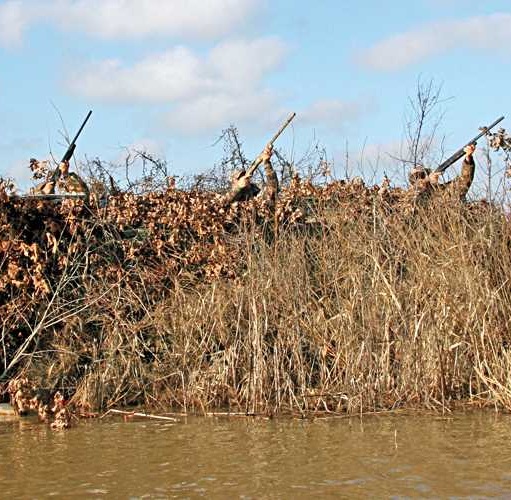 It’s like a bad record that keeps on playing. Ducks are circling over the blind when a hunter inside decides to peek. The birds see him, and their reaction is quick and obvious. They dig for altitude and disappear over the horizon. Call it the “Bye Bye Birdie Blues.”
It’s like a bad record that keeps on playing. Ducks are circling over the blind when a hunter inside decides to peek. The birds see him, and their reaction is quick and obvious. They dig for altitude and disappear over the horizon. Call it the “Bye Bye Birdie Blues.”
All of us have sung it at one time or another, because ducks and geese rely on keen vision as a first line of defense against predators, including hunters. Waterfowl are especially adept at spotting movement and seeing detail in low light conditions. A glint here, a fidget there, a shiny shell hull, or some other visual cue may be all it takes to alert them to danger.
To avoid detection, hunters are continually perfecting ways to improve the stealthiness of permanent blinds, boat blinds, pits, layouts, and natural cover.
Following are tips from five veteran waterfowlers who have spent years mastering the art of hiding from the prying eyes of ducks and geese.
Hiding Big, Boxy Blinds in Plain Sight
A few years ago, I wrote an article for this magazine titled “My Ultimate Duck Blind,” which chronicled the construction of a hide that my partners and I built in a flooded field in western Kentucky. Making this blind disappear in plain sight was crucial to our success. To do so, we used materials and methods to turn the blind into a “thicket,” giving it a natural profile that would not flare circling ducks.
We started by spraying the large plywood box blind with olive drab paint. Next we covered it with military camo netting, carefully trimming out the doors and shooting holes. We wrapped the top and sides of the blind in heavy woven wire to provide a means of attaching vegetation. Then we piled on white oak and willow branches, plus various vines and weeds that grew naturally in the river bottom, cinching this vegetation tightly to the wire with plastic zip ties. When we were finished, the blind looked like a big pile of brush.
The blind had some unique finishing touches. We covered its six shooting holes with camo netting and oak brush to break up the open spaces. We also rigged each shooting hole with a camouflaged wire panel that was hinged along the front rail. When we are hunting, we keep these panels propped up, ensuring that working ducks will never see us. Then, when the birds fly into shooting range, we push the panels forward and out of our way as we come up shooting.
To add to the blind’s stealth effect, we drove several green metal fence posts at random intervals and distances around the blind. We then tied small precut oak and willow saplings to the posts to make them look like stand-alone trees. In addition, we fashioned a wire tunnel over the dog platform and runway, brushing it heavily to hide our retriever.
The blind still had a boxy profile, so to help round it out, we built curved wire screens on each end. The screens, which were constructed out of metal fence posts, woven wire, and brush, provided extra camo to hide the doors and steps on both ends of the structure. We were careful to leave enough space for hunters to wade between the blind and the screens.
By Wade Bourne, A great writer and who will be missed!
